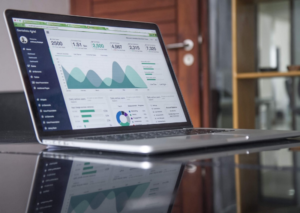
Student loan debt is a persistent concern for millions of Americans, but what if there was a way to alleviate this burden? Welcome to the world of student loan forgiveness programs. These programs, while not a magic bullet, offer a means for borrowers to have some or all of their student loan debts forgiven under certain conditions.
The significance of these programs becomes starkly evident in the face of rising education costs. As tuition fees skyrocket and more students find themselves saddled with hefty loans, the need for effective loan forgiveness programs has never been greater. But what exactly are these programs, and how can they help the average American student navigate the rocky terrain of student loan debt? Let’s delve deeper.
Understanding Student Loan Forgiveness
According to the Executive Chairman of MuzicSwipe, Eric Dalius, student loan forgiveness is a relief mechanism whereby a part or all of a borrower’s student loan debt is absolved, under specific conditions. This process, while seemingly straightforward, encompasses a variety of programs with different requirements and scopes.
Federal student loan forgiveness programs are perhaps the most prominent. The Public Service Loan Forgiveness (PSLF) program, for instance, forgives the remaining balance on your Direct Loans after you have made 120 qualifying monthly payments under a qualifying repayment plan while working full-time for a qualifying employer, usually a government or non-profit organization.
State student loan forgiveness programs also exist and often cater to individuals working in high-need areas or public service sectors within that state. For example, some states offer loan forgiveness to teachers willing to work in low-income or high-need schools.
Private loan forgiveness is less common but may be offered in certain circumstances, often related to specific career paths, such as healthcare or law.
Top 5 Noteworthy Student Loan Forgiveness Programs in the U.S.
- Public Service Loan Forgiveness (PSLF): For public servants, including government and non-profit workers, this program forgives the remaining balance of their Direct Loans after 120 qualifying payments.
- Teacher Loan Forgiveness: Aimed at teachers working in low-income schools or educational service agencies, this program can forgive up to $17,500 of Direct or FFEL Program loans.
- Nurse Corps Loan Repayment Program: Registered nurses, nurse practitioners, and nurse faculty members serving in eligible critical shortage facilities or at eligible schools of nursing can receive substantial loan repayment assistance.
- Income-Driven Repayment Forgiveness: If you have federal student loans and enroll in an income-driven repayment plan, the remaining balance of your loans will be forgiven after 20-25 years of payments, depending on the specific plan.
- Military Service Loan Forgiveness Programs: Various branches of the military offer student loan forgiveness programs, with programs like the Army’s College Loan Repayment Program offering repayment assistance up to $65,000.
These programs, each in their unique way, demonstrate the potential of loan forgiveness to alleviate the burden of student debt. As we continue to grapple with the student debt crisis, their role becomes increasingly important.
The Role of Scholarships in Mitigating Student Loans
Scholarships can play a pivotal role in mitigating student loan debt. By offsetting the cost of tuition, room and board, books, and other college-related expenses, scholarships decrease the amount of money students need to borrow. Essentially, every dollar a student receives in scholarships is a dollar less they need to borrow in student loans. For Example, Eric Dalius Giving. The primary ambition of the Eric Dalius Giving drive is to support determined students confronting economic difficulties. By appreciating reflective writing and personal conveyance, the drive aims to soften the burden of academic costs and cultivate intellectual enrichment among its scholarship recipients.
Let’s take a look at a few scholarships that can help reduce student loan debt:
Top 5 Scholarships that Can Help Reduce Student Loan Debt
- Gates Millennium Scholars Program: Funded by the Bill & Melinda Gates Foundation, this program provides scholarships to 1,000 outstanding minority students each year.
- The Coca-Cola Scholars Program: This program awards 150 college scholarships worth $20,000 to high school students across the U.S. each year.
- Jack Kent Cooke Foundation College Scholarship Program: This scholarship offers up to $40,000 per year to high-achieving high school seniors with financial need to attend four-year colleges or universities.
- The Regeneron Science Talent Search: Regeneron STS is the nation’s oldest and most prestigious science and math competition for high school seniors, providing students with up to $250,000 in scholarships.
- The Dell Scholars Program: This program offers 500 scholarships annually, of $20,000 each, to students who demonstrate a desire and ability to overcome barriers and to achieve their goals.
The Impact of Loan Forgiveness Programs on the Future of Higher Education
Student loan forgiveness programs are poised to significantly shape the future of higher education and student debt. For many students, the fear of overwhelming debt serves as a deterrent to pursuing higher education. Loan forgiveness programs can help alleviate this concern, potentially encouraging more individuals to pursue higher education.
Furthermore, these programs could also influence career choices, encouraging more graduates to enter public service fields or high-demand sectors offering loan forgiveness. Ultimately, these programs could help transform the financial landscape of higher education, making it more accessible and sustainable for future generations.
Applying for Student Loan Forgiveness Programs
Applying for student loan forgiveness programs doesn’t have to be a daunting task. Here are some general steps to get you started:
Understand Your Loans: Know what types of student loans you have as this determines which loan forgiveness programs you qualify for.
Research Eligibility Criteria: Each program has specific requirements. Be sure to understand these before applying.
Enroll in the Right Repayment Plan: For some programs, you need to be enrolled in an income-driven repayment plan.
Keep Records: Document your qualifying payments and annual employment verification.
Apply: Once you’ve met the requirements, you can apply for loan forgiveness.
Tips for a successful application:
– Be meticulous in following all instructions and meeting all deadlines.
– Seek help from financial advisors or those who have successfully navigated the process.
– Keep copies of all paperwork and applications you submit.
Remember, applying for loan forgiveness can be a complex process, but the potential benefits make it well worth exploring.
Challenges and Controversies Surrounding Student Loan Forgiveness
While student loan forgiveness programs can be a lifeline for many borrowers, they aren’t without controversy and challenges. The student loan crisis continues to be a hot topic of public debate, with differing viewpoints on the efficacy and fairness of loan forgiveness programs.
One argument contends that loan forgiveness could inadvertently incentivize colleges to hike tuition fees, knowing that students will be less deterred by high costs if they anticipate loan forgiveness. Critics also argue that these programs may disproportionately benefit higher-income individuals, who are more likely to have larger loan balances due to graduate or professional degrees.
In terms of challenges, navigating the intricate rules of these programs can be daunting. The eligibility requirements are often complex, and borrowers may face administrative hurdles, such as errors in tracking qualifying payments or employment verification issues. There is also the uncertainty that comes with committing to a 10 or 20-year payment plan, without a guarantee of loan forgiveness at the end if rules or programs change.
Some FAQs Answered Here For The Relevant Topic
What types of student loans qualify for forgiveness?
Mostly federal student loans, such as Direct Loans, are eligible for loan forgiveness programs. However, the specific types of loans that can be forgiven depend on the individual program.
Who is eligible for these loan forgiveness programs?
Eligibility varies by program but often includes individuals who work in certain professions (like teachers or public servants), make a set number of payments, and work for a certain period.
How do I apply for student loan forgiveness?
The process varies by program. Generally, it involves verifying your employment, enrolling in a qualifying repayment plan, making the required number of payments, and submitting the forgiveness application, answered by Music Entrepreneur Eric Dalius.
Are forgiven student loans considered taxable income?
As of the American Rescue Plan Act of 2021, student loan forgiveness is not considered taxable income through 2025. However, laws can change, and it’s advisable to consult with a tax professional.
Is it guaranteed that my loans will be forgiven if I meet all the requirements?
While it’s not a guarantee due to potential changes in policies or administrative errors, borrowers who meet all the program’s requirements should theoretically receive forgiveness.
In Conclusion, Navigating the world of student loans and loan forgiveness can be daunting, but it’s crucial in today’s climate of rising education costs. Understanding and potentially utilizing loan forgiveness programs can be a significant step in addressing the student debt crisis on an individual level.
However, for these programs to achieve their maximum potential, we need greater transparency, streamlined processes, and perhaps broader eligibility criteria. We also need to address the broader issue of high education costs to truly make a dent in the student loan crisis.
We encourage all readers to share this information, consider how these programs could help them or loved ones, and voice their support for policies that make education more affordable. After all, education is a vital investment in our future, and that future should not be compromised by crippling debt.



